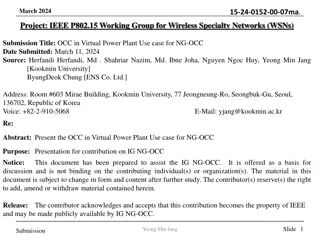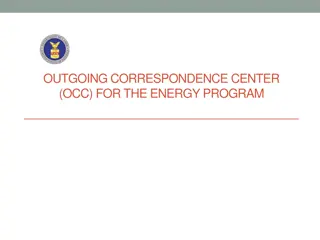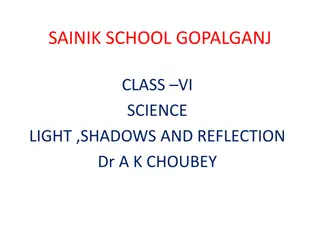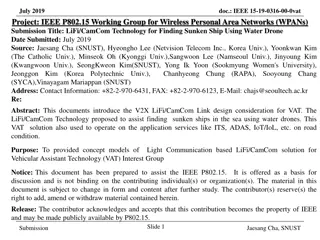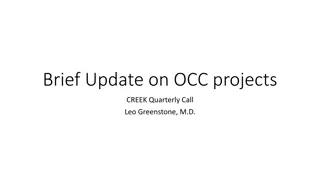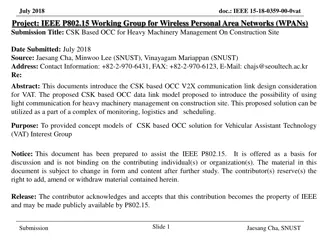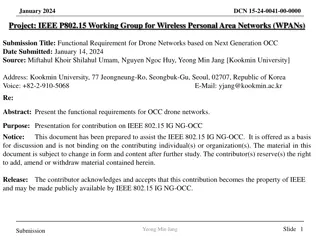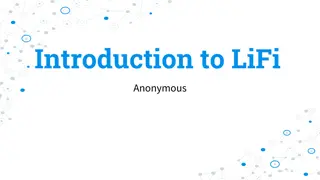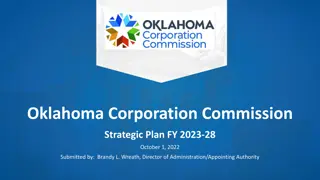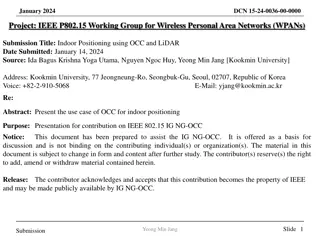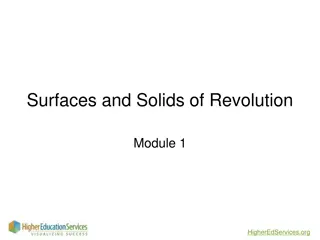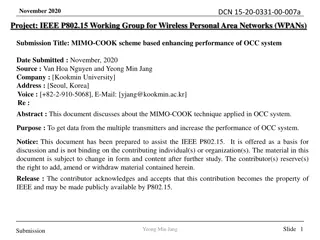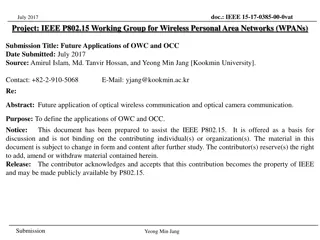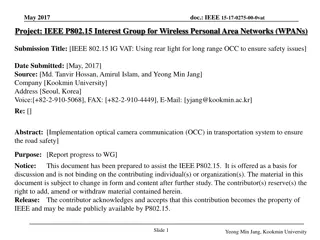
Light Communication Contributions for 5G Revolution
Explore the advantages and challenges of light communication for the 5G revolution. Learn about the performance requirements, innovative services, and deployment strategies for leveraging light-based communication technologies in the era of 5G networks.
Download Presentation

Please find below an Image/Link to download the presentation.
The content on the website is provided AS IS for your information and personal use only. It may not be sold, licensed, or shared on other websites without obtaining consent from the author. If you encounter any issues during the download, it is possible that the publisher has removed the file from their server.
You are allowed to download the files provided on this website for personal or commercial use, subject to the condition that they are used lawfully. All files are the property of their respective owners.
The content on the website is provided AS IS for your information and personal use only. It may not be sold, licensed, or shared on other websites without obtaining consent from the author.
E N D
Presentation Transcript
doc.: IEEE 802.15-xxxxx doc.: IEEE 802.11-17/XXXX January 2017 OCC and LiFi based Light Communication for 5G Revolution Date: Jan 19, 2017 Authors: Name Company Address Phone Email Yeong Min Jang Kookmin University Seoul - Korea 82-2-910-5068 yjang@kookmin.ac.kr Mostafa Zaman Chowdhury Kookmin University Seoul - Korea 82-2-910-5068 Nam Tuan Le Kookmin University Seoul - Korea 82-2-910-5068 Submission Slide 1 Yeong Min Jang, Kookmin University
doc.: IEEE 802.15-xxxxx doc.: IEEE 802.11-17/XXXX January 2017 5G Performance Requirement Issues Ultra system capacity Ultra low latency Massive device connectivity Ultra high data rate Ultra low energy consumption Ultra high spectrum efficiency Ultra high QoE Edge Coverage Submission Slide 2 Yeong Min Jang, Kookmin University
doc.: IEEE 802.15-xxxxx doc.: IEEE 802.11-17/XXXX January 2017 5G Challenging Issues Flexible and efficient use of all available spectrums Spectrum extension Innovative services Adaptable in nature Flexible network design Deployment of ultra-dense heterogeneous networks Software driven network Big data-driven network intelligence Network densification Submission Slide 3 Yeong Min Jang, Kookmin University
doc.: IEEE 802.15-xxxxx doc.: IEEE 802.11-17/XXXX January 2017 Advantages of Light communication (1/2) Wide unregulated spectrum Illumination as well as data communication High spatial reuse and high security High data rate and high reliable link Low user interference Efficiency of link resources Submission Slide 4 Yeong Min Jang, Kookmin University
doc.: IEEE 802.15-xxxxx doc.: IEEE 802.11-17/XXXX January 2017 Advantages of Light communication (2/2) Safe for health Flexible backhaul options No additional Communications) or Image Sensor Communications Need additional H/W for LiFi (PD based Communication) H/W for OCC (Optical Camera Submission Slide 5 Yeong Min Jang, Kookmin University
doc.: IEEE 802.15-xxxxx doc.: IEEE 802.11-17/XXXX January 2017 Light Communication Contributions for 5G Revolution High capacity, high data rate MIMO, OFDM Small cell topology deployment Edge coverage QoS and full band frequency reuse Low latency High secure and high resolution Human safety Low energy consumption Submission Slide 6 Yeong Min Jang, Kookmin University
doc.: IEEE 802.15-xxxxx doc.: IEEE 802.11-17/XXXX January 2017 Challenges of Light communication in 5G Line-of-sight communication Ambient noise in outdoor environment Handover (or Link switching), relay or mesh topology High mobility Uplink downlink full-duplex Self-Organization Integration with RF communication systems Submission Slide 7 Yeong Min Jang, Kookmin University
doc.: IEEE 802.15-xxxxx doc.: IEEE 802.11-17/XXXX January 2017 Light Communication in 5G Application scenario point-to-point links data transmission precise localization Indoor environment Fixed communication Outdoor environment Fixed communication Mobile communication V2X communication Submission Slide 8 Yeong Min Jang, Kookmin University
doc.: IEEE 802.15-xxxxx doc.: IEEE 802.11-17/XXXX January 2017 Conclusions There is a shortage of RF spectra: most of them have been allocated Traditional RF based wireless communication has arrived at a bottleneck to meet 5G requirement Light communication technology is an ideal complement to RF systems in 5G technologies Coexistence of RF and light communication technologies can fulfill the requirement of 5G communication Submission Slide 9 Yeong Min Jang, Kookmin University

